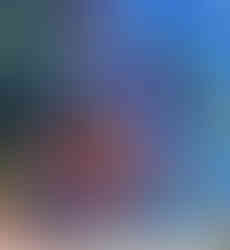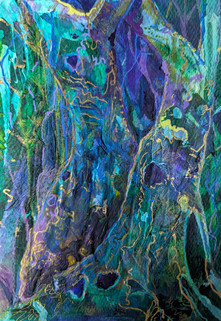Wading into Watercolour
- Ann Russell
- Oct 2
- 4 min read

Lots of people I speak to have a fear of using watercolour. In fact, I have heard even artists declare that it is the most difficult of painting media. It isn't. It does particular things well, and others not so well. It can take a bit to really get the hang of it, but it is easily my favourite painting medium. There are aspects of the medium that are less controllable than others, which is what I think people don't like about it, but for me, nothing creates beautiful fluid colours like watercolour.
Having said that, there are people out there who think that there is a "right" and "wrong" way to use the medium. Certainly, if you are a "traditional" watercolourist this will be your viewpoint. For those people, watercolour should be applied in a particular way, not include anything other than watercolour, and have a particular look to it. The reality is, though, there are as many different ways to use the medium as there are artists who use it. I have talked about this before, but no artist has ever achieved very much by playing by the rules. So, I reject that idea for myself and my students. One of my favourite watercolourists is Shirley Trevena, a self-taught British artist. Having never learnt the "rules", Trevena habitually combines watercolour with all sorts of other things; makes the most of back runs and watermarks that will inevitably occur; and pushes the medium as far as it will go. Experimentation is key to excellence in any medium and watercolour is no exception.

Understanding that watercolour is a painting medium that requires water is key to using the medium. If you understand the nature of water in a scientific sense, you will better be able to manipulate watercolour paint. That includes knowing about the meniscus of water, which keeps the water confined until it comes close to other water molecules. Then, the droplets of water are attracted to each other and will be drawn to each other.
It is also helpful to understand that watercolour paint pigment, when mixed with water becomes a suspension, not a solution. That is, the particles of pigment are suspended in the water; they do not dissolve turning the water into another substance. The pigment essentially "hangs out" in the water. As such, watercolour paint is always able to be activated by water...even after it has dried. So, when you paint, some of the pigment stains the paper, but most of it is sitting on the paper surface. This means that it can always be blotted off, even after it has dried, just by loosening it up with water.
Watercolour needs sufficient water to be added so that it just flows off the end of your brush. There shouldn't be a need to rub and scrub, except if you are specifically using a dry brush technique. Generally, it should be transluscent, that is, the paper is visible through the paint, which is the major factor that sets it apart from other painting media. This means that it can be layered, building up tone by painting over the top of already dry paint and working from light colours to dark.
There are two main ways to apply the paint: on wet paper or dry paper. Using the idea of breaking the meniscus, on wet paper, the paint will mix and merge, creating the beautiful feathered blended colours it is known for. But equally, if you apply watercolour to dry paper, it stays exactly where you put it, enabling very precise mark making.
Most paintings will be a combination of these two methods - wet on wet and wet on dry. This means that some parts will need to be be allowed to dry to create those precise marks. If drying is not happening quickly enough, a hair dryer makes a great addition to the art studio.
If you are interested in watercolour painting, give it a go, just avoid buying super cheap materials. Often they are inferior quality and will cause you great frustration. Paints, brushes, and paper should be at minimum student quality - middle of the range in terms of expense. Brushes need to be soft in order to hold more water and I would recommend keeping your watercolour brushes away from other kinds of paint to avoid them being damaged. The thicker the paper, the less there is a need for stretching the paper - I use a minimum of 300gsm.
Its a big call, but watercolour painting has kept me sane, because of its fluidity and the beutiful way that colours combine on paper. Working with wet on wet means that you will end up with aspects of your painting that you didn't plan or possibly expect, but for me, that is what makes watercolours so interesting. I like to keep my work interesting to me by laying down and manipulating watercolour without trying to control it at all from the outset. Once it is dry, I will take the painting further, but I am absolutely taking clues from the painting, rather than setting out to paint a particular "thing". I will often add other media, but all of the following paintings started out this way.






























Comments